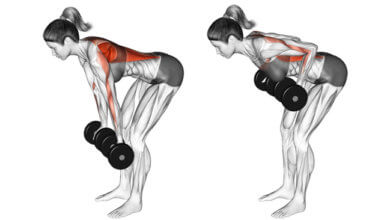How Much Does a Trap Bar Weigh?
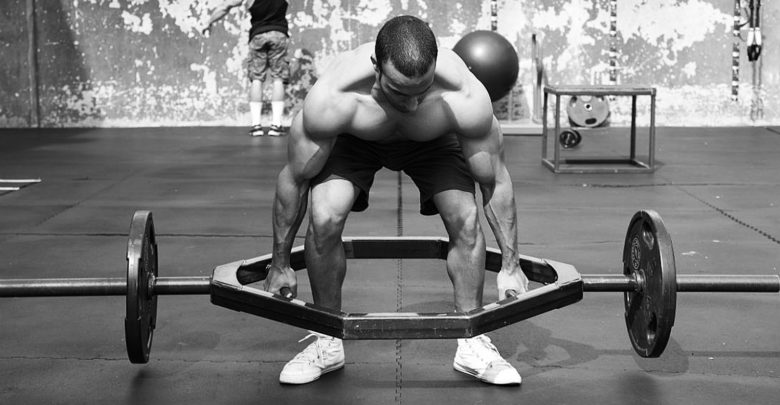
All too many times have I walked into a gym and picked up the trap bar only to be surprised at the weight of the thing. Not only is the bar usually on the heavier side, but it seems like every other one weighs a different amount.
Well, today let’s try to cut through the chaos, and figure out exactly how much the average trap bar weighs, not to mention make sense of some of the weight variation.
What is a Trap Bar?
A trap bar is some variation of this:
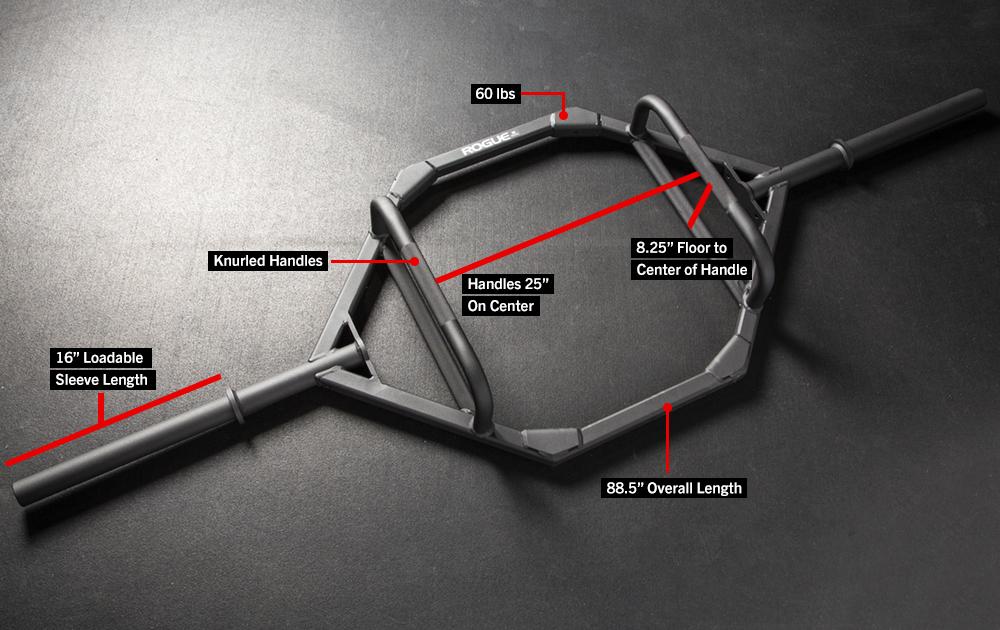
You might have seen these float around the gym before if your gym is any good, that is.
Built for making things like deadlifts a little more beginner-friendly or easier for when you’re squatting and deadlifting on the same day, trap bars are great for simplifying certain exercises due to the neutral grip of the handles and the repositioning of the weight in your center of gravity.
To use, you simply load up the sides with plates, and then use a standard bushing or bearing barbell, keeping your weight within the square, under the balls of your feet (when you do a trap bar deadlift, at least).
Is a Hex Bar The Same Thing as a Trap Bar?
Yes. They are just two different names for the same thing, weird, I know.
Sometimes I think things in the gym are just named differently to keep the newbies out. But that is a personal conspiracy theory.
How much does a Trap Bar Weigh?
Short answer: A trap bar weighs 45-60 pounds.
Long answer: The weight of a trap bar really depends on what type of trap bar you’re using and who it’s made by. Most of the trap bars that I have ever used have always weighed around 60 pounds, though I have used a few trap bars that drop to around 45 lbs. However, there are certainly some that go as heavy as 80 pounds, and some that drop as low as 35.
All in all, the wide range can be a little annoying as you try to track your progress, especially if you have worked out at multiple gyms recently.
Due to the varying construction of the bars – the inclusion of handles, width of the bar, frame design, etc – the weight can really vary from bar to bar. And this goes for other bars too. I have previously set out to figure out how much the bar weighs, and ended up diverging into deadlift bar weight, bench press bar weight, Ez bar weight, and the smith machine bar weight.
The best way to find out is to weigh the one at your gym.
Or, even just look up the brand and see what is listed on their website!
Different Types of Trap Bars and How Much each Trap Bar Weighs
While most trap bars fall under the same sort of category, there are some slight differences in design that separate them from one another.
As mentioned before, the inclusion of handles is a standard variation in the trap bar design. You might stumble across a trap bar without the front frame bar or one with extra long sleeves (the part where the plate goes on and where you fit your barbell end caps), but otherwise, they are all mostly the same.
The only exception to this standard is the extra-large trap bar, which I will go into more detail soon enough.
Conventional Trap Bar – Weighs 50 lbs.
Conventional trap bars are the ones that look like this
Conventional trap bars are the ones that you find in most local gyms.

Even though it says conventional, don’t think that means that every trap bar is going to weigh the same as a barbell, likely, your trap bar is going to be heavier.
The main possible exclusion to that rule is if the trap bar lacks raised handles, handles mean that there are an additional few pounds added on to the frame, and is usually a symbol of a lighter design.
Raised handles are not the bars that connect both ends of the box together but raised handles on top of those to offer less of a range of motion during the movement.
Here is an image with the handles facing down, where the lifter chose to have more range of motion in their movement by choosing to not use the raised handles.
Extra Large Competition Trap Bar – Weighs 60+ lbs.
Competition style trap bars are the ones that look like this
Competition trap bars weigh about 60+ lbs.
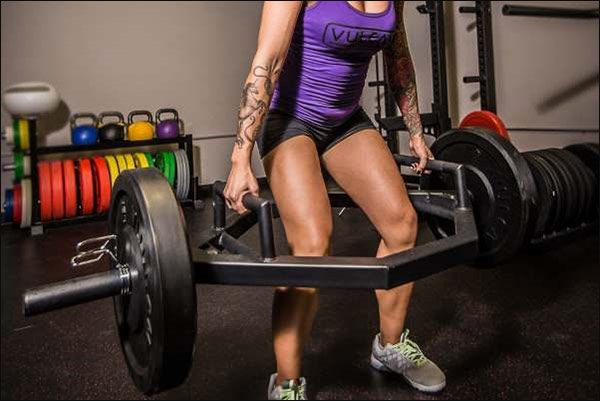
These are the suckers that can get really heavy, really fast. For an extra-large frame, some bars can get upwards of 80 pounds, as I mentioned before.
Great for the bigger lifters here (size or strength), extra-large bars offer a bigger frame for the lifter themselves and bigger sleeves for more weight.
Why Would a Trap Bar Be Used Over a Normal Straight Bar?
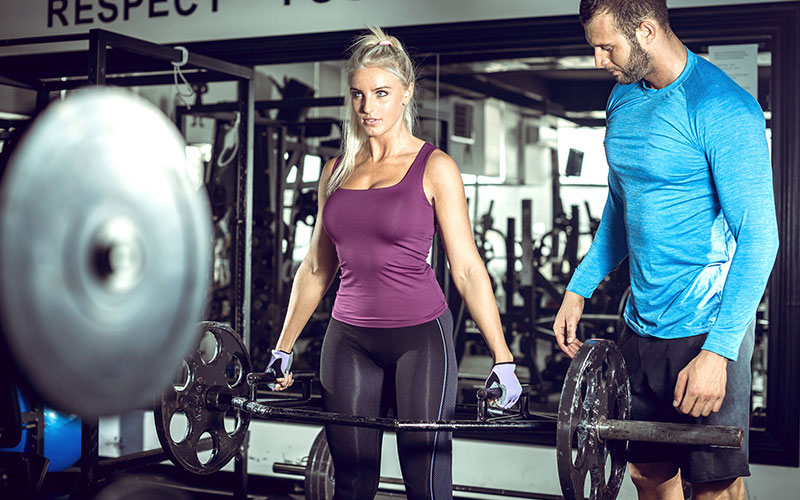
I could go into this question with a lot of ego, saying, “No, the barbell is always the best way to go if you want to be a true lifter,” or something like that. But even as something of a powerlifter, the utility of the trap bar is abundantly clear. I even put it in many of the workouts I have made for others!
The Hex bar although is not a bar that is used as often as a straight barbell, it is most definitely very useful for quite a few exercises, even more so than the straight barbell.
Some of the exercises that the trap bar is extremely useful for are:
- Farmer walks
- Deadlifts (and all the variations you can manage)
- Shrugs
- Rows
- Overhead press
There are reasons for each exercise why you might want to select the trap bar over a straight bar, but in general, here are a few factors in how it can change up your workout:
The Neutral Grip – Because of how the bar forms around your body, rather than you around it, you can grip it with your palms facing towards yourself, rather than behind or in front of yourself – this is a neutral grip.
The neutral grip is great for a few reasons:
- It changes up your movement patterns – variation is sometimes good for its own sake. When I tried something of a Westside Light routine, I noticed a great jump in my 3rm strength!
- It makes certain movements feel more natural
- May protect your bicep on certain movements (rather than doing an over-under grip on a deadlift, do neutral grip)
- Centers The Weight – Another super unique thing, and the source of the bar’s ability to have a neutral grip, is the fact that it bends around you, rather than you around it. This factor changes a ton of things:
- Exercises like the farmer’s walk now become possible without dumbbells or separate implements, allowing you to load up well beyond the limits of dumbbells.
- Adds in a unique variation to certain exercises like the bent-over row or shoulder press.
- Adds in completely new exercises like the trap bar deadlift, making the exercise easier to learn and perform (my max trap bar deadlift is easily 50 pounds heavier than my straight bar pull, even without training it at all!).
Related Reading: Neutral Grip Pull Ups – Everything You Need to Know
When Should I Use a Trap Bar Over a Normal Straight Bar?
Now that you know some of the differences, you might be thinking about how to take advantage of such differences to craft a better workout.
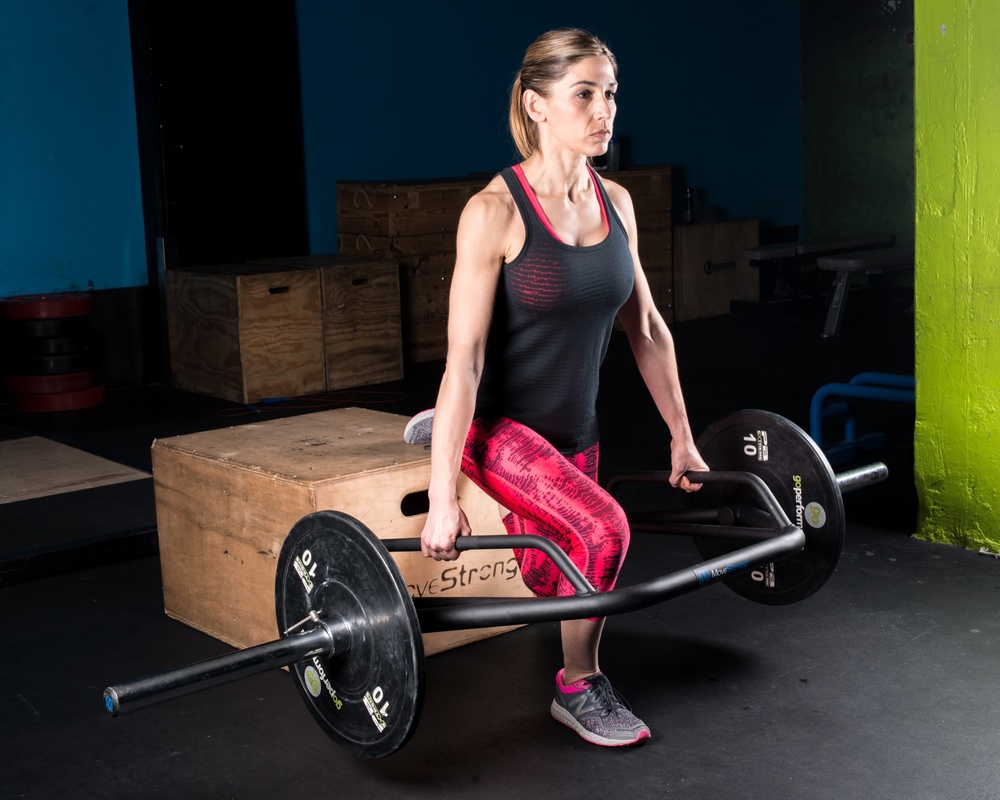
Personally, I don’t use the trap bar all the time, after all, I still have the short barbell I had picked up when setting up my home gym. But I have utilized the trap bar for various reasons in the past, and even recommended it to some for their routines more often than not.
Here are a few reasons, and subsequent ways, to utilize the trap bar in your routine:
You Are a New to Certain Lifts
Because of the previously mentioned ease of use, the trap bar makes an excellent sort of training wheel, or even replacement exercise, for movements such as the deadlift or the bent-over row.
This is likely the best reason to use the trap bar, especially concerning the trap bar deadlift.
Too many times have I seen scrawny teen boys in their sophomore year of high school perform the deadlift with a form so atrocious that I fear for their spine every time I witness a rep.
But I am not unempathetic, because I was there once too. But unfortunately, not everyone eventually corrects their form before it’s too late and their back pain increases to an unbearable extent to deadlift heavy. I even don’t want to imagine them doing even one set to failure several days a week with such crooked form – even using theragun after your workout won’t save you on this one.
The trap bar fixes all of this.
With the centering of the weight over your center of mass, pulling feels smooth and natural, and getting into position requires little more than proper bracing. You can even do sets to failure everyday since there’s very little chance you’ll get the form wrong.
Variation for Variation’s Sake
As I hinted at earlier, I once incorporated the trap bar into a twelve-week cycle where I focused on rotating main lifts to improve my three-rep max (and by proxy my one-rep max). The trap bar was an excellent variation to work on for my deadlift.
Sometimes just mixing things up in the gym can be great for your focus and continual intensity, or can offer constant muscular overload through neurological adaptation. This is how those muscle growth stories you see online are built.
And it’s, of course, a great way to boost your stamina and endurance in the long term. Trust me, although I haven’t reached the ranks of the likes of Ed Coan, I’m definitely far off from where I was back when I started off.
More Effective Exercises
Due to the previously mentioned ways that a trap bar can be used over a regular straight bar, certain exercises like the farmer’s walk and shrugs can just be more effective with the trap bar than with dumbbells/barbells (depending on what you are looking for in an exercise).
If I were to go heavy on farmer’s walks, I would certainly use the trap bar, because dumbbells only go so high.
Now You Know the Weight of a Trap Bar
The trap bar is quite versatile and can be used for many reasons and applied to your routine with a great deal of strategy. And knowing its weight of an average of around 50 pounds or higher, you can track your progress that much more effectively.
Recommended Readings:
- Reverse Hyperextensions Machine for Home Use
- Shock the Muscle Myth: Is It Really a Myth? What Is The Science Behind It?
- Sumo squats vs Goblet Squats: Which One Is Better for You
- Single Set Training; What Is It? What Are Its Perks? Should You Be Doing It?
- How to Build Core Strength from Nothing: My Experience
- Motivational Water Bottles
Ben Mayz
Hi there! I'm Ben, main author and chief editor at Fitlifefanatics.com. I have been obsessed with Strength Training and Fitness for 18 years now.
My passion for living a happy fit lifestyle is what made me realize that fitness is what I wanted for my future.
I went on to earn my Masters in Sports Training & Biomechanics.
My passion for Strength training & fitness and my love of helping others is what made me start Fitlifefanatics.
Here, myself, and a team of specialist aim to provide the most accurate, and actionable information possible in hopes to help foster the fitness community forward.
You can learn more about Fitlifefanatics on our About Page


